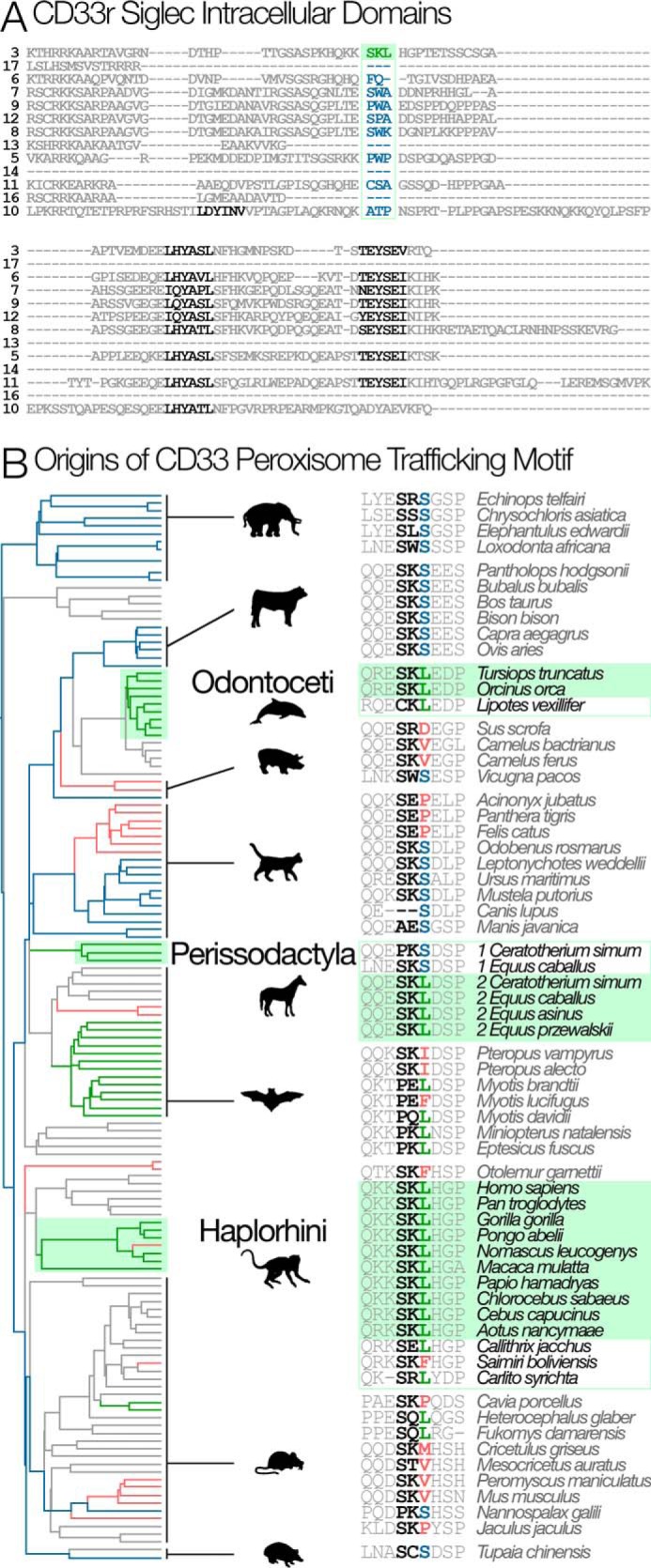Figure 6.

Phylogenetic origins of the peroxisome trafficking motif. A, alignment of the intracellular region of human CD33rSiglecs (Siglec 13 is from chimpanzee). Among human CD33rSiglecs, only CD33 has a peroxisome trafficking motif (SKL: shown in green). ITIM and ITIM-like motifs are shown in black. B, the SKL motif evolved multiple times in parallel (green boxes): Haplorhine primates, Perissodactyl ungulates (in one of two CD33-like duplicates), and Odontoceti-toothed whales. Branches are colored according to the third position of the SKL motif. S is the most likely ancestral state found in clades whose common ancestors existed at the base of the tree (blue branches). L (green branches) exist in several places in the tree and are not always associated with the SKL motif. Other amino acids at this position are colored red and are represented by red branches. Unsampled mammalian clades are shown in gray.
